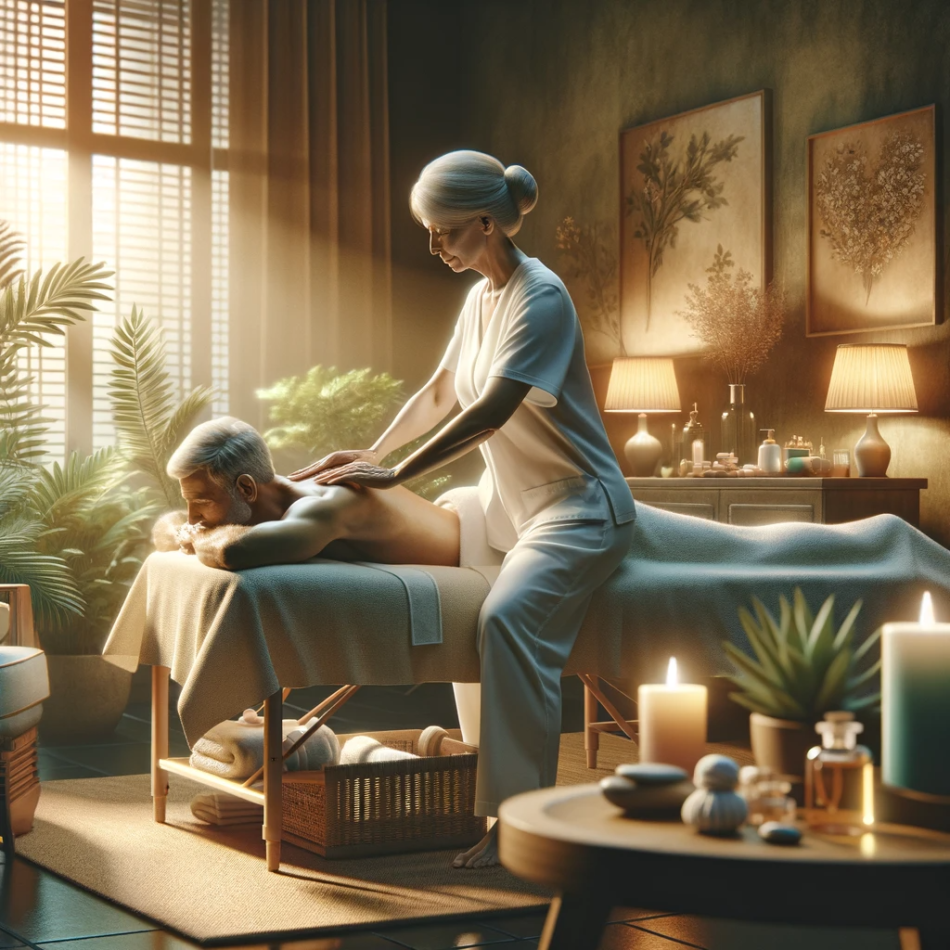Senior wellness encompasses a holistic approach to health that includes regular exercise, a balanced diet, and mental well-being. One often overlooked aspect of senior wellness is the therapeutic benefits of regular massages. Massages offer a range of physical and psychological advantages that can significantly enhance the quality of life for older adults. In this comprehensive guide, we will explore the many benefits of massage for seniors, the different types of massages available, and tips for incorporating regular massages into your health routine.
Introduction
Aging is a natural part of life, and as we grow older, our bodies undergo various changes. While these changes are a normal part of the aging process, they can sometimes lead to discomfort, pain, and reduced mobility. Additionally, older adults may experience increased stress and anxiety due to life transitions and health concerns. In the pursuit of senior wellness, it’s crucial to explore complementary therapies that can enhance both physical and mental well-being.
Massage therapy, which involves the manipulation of soft tissues and muscles, has been used for centuries to promote relaxation, relieve pain, and improve overall health. For seniors, regular massages can offer a wide range of benefits, making them a valuable addition to a senior wellness routine.
Benefits of Massage for Seniors
1. Pain Relief
- Massage therapy can provide significant pain relief for seniors dealing with conditions such as arthritis, back pain, and muscle tension.
- The manipulation of soft tissues helps improve blood circulation, relax muscles, and reduce pain and discomfort.
2. Improved Flexibility and Range of Motion
- As we age, our muscles tend to become tighter, leading to reduced flexibility and range of motion.
- Regular massages can help seniors maintain or even improve their flexibility and mobility by addressing muscle stiffness and tension.
3. Stress Reduction
- Stress and anxiety are common among older adults, especially those facing health challenges or life changes.
- Massages are known for their relaxation benefits, reducing stress hormones and promoting a sense of calm and well-being.
4. Enhanced Circulation
- Massage therapy increases blood flow, which can be particularly beneficial for seniors with circulation issues.
- Improved circulation helps deliver essential nutrients and oxygen to tissues and organs, promoting overall health.
5. Better Sleep Quality
- Seniors often struggle with sleep disturbances and insomnia. Massage can help improve sleep quality by promoting relaxation and reducing pain and discomfort.
6. Mood Improvement
- Regular massages can have a positive impact on mood and emotional well-being, potentially reducing symptoms of depression and anxiety.
7. Social Interaction
- Visiting a massage therapist provides an opportunity for social interaction, reducing feelings of isolation and loneliness.
8. Enhanced Overall Well-Being
- The combination of physical and emotional benefits leads to enhanced overall well-being for seniors who incorporate massages into their health routine.
Types of Massages for Seniors
There are several types of massages, each with its unique techniques and benefits. When considering massage therapy as part of senior wellness, it’s essential to choose the type that aligns with your specific needs and preferences. Here are some popular massage options for seniors:
1. Swedish Massage
- Swedish massage is a gentle and relaxing massage style that uses long, gliding strokes, kneading, and gentle stretching.
- It’s an excellent choice for seniors seeking relaxation, stress reduction, and improved circulation.
2. Deep Tissue Massage
- Deep tissue massage focuses on targeting deeper layers of muscle tissue and fascia.
- It can be beneficial for seniors dealing with chronic pain, muscle tension, and limited mobility.
3. Hot Stone Massage
- Hot stone massage involves the use of heated stones placed on specific areas of the body.
- The warmth of the stones can help relax muscles and provide relief from pain and tension.
4. Aromatherapy Massage
- Aromatherapy massage combines massage techniques with the use of essential oils.
- It’s a holistic approach that can promote relaxation, stress relief, and emotional well-being.
5. Chair Massage
- Chair massage is a convenient option for seniors who may have difficulty lying on a massage table.
- It’s typically shorter in duration and focuses on relieving tension in the neck, shoulders, and back.
6. Reflexology
- Reflexology involves applying pressure to specific points on the feet, hands, or ears to stimulate healing responses in corresponding parts of the body.
- It can be a soothing and beneficial option for seniors seeking relief from various ailments.
Tips for Incorporating Regular Massages into Your Health Routine
1. Consult Your Healthcare Provider
- Before starting a regular massage regimen, consult with your healthcare provider, especially if you have underlying medical conditions or concerns.
2. Choose the Right Massage Therapist
- Look for a licensed and experienced massage therapist who specializes in working with older adults.
3. Discuss Your Health and Goals
- Communicate openly with your massage therapist about your health concerns, pain areas, and wellness goals.
4. Set Realistic Expectations
- Understand that while massages can provide relief, they may not be a cure for chronic conditions.
- Setting realistic expectations ensures you fully appreciate the benefits.
5. Schedule Regular Appointments
- Consistency is key. Schedule regular massage appointments as part of your wellness routine to maximize the benefits.
6. Hydrate and Rest
- After a massage, drink plenty of water to stay hydrated and allow your body to rest and recover.
7. Combine with Other Wellness Practices
- Massages can complement other wellness practices, such as exercise, meditation, and a balanced diet.
8. Listen to Your Body
- Pay attention to how your body responds to massages. If you experience discomfort or have concerns, communicate them with your therapist.
9. Consider At-Home Massage Devices
- In addition to professional massages, explore at-home massage devices, such as handheld massagers or massage chairs, for ongoing self-care.
Conclusion
Senior wellness is a multifaceted approach to health that encompasses physical, mental, and emotional well-being. Incorporating regular massages into your health routine can be a valuable and enjoyable way to enhance your quality of life as you age.
Massages offer a range of benefits, including pain relief, stress reduction, improved flexibility, and better sleep quality. By choosing the right type of massage, consulting with healthcare professionals, and scheduling regular appointments with a qualified therapist, you can reap the rewards of this holistic therapy.
Ultimately, senior wellness is about embracing practices that support your health and happiness in your later years. Massages can be a powerful tool in your wellness arsenal, contributing to a more fulfilling and comfortable aging journey.
-

1 Healthy Aging: The Benefits of Regular Social Interaction
-

2 Understanding and Managing Menopause Symptoms Naturally
-

3 Navigating Health Insurance Options for Seniors in the US
-

4 The Role of Technology in Enhancing Senior Health
-

5 Cultivating a Positive Mindset for Healthy Aging
-

6 A Guide to Age-Appropriate Exercise Routines
-

7 Understanding the Link Between Stress and Aging
-

8 Navigating Nutrition: Healthy Eating in Your 50s and Beyond
-

9 Skin Health in Your 60s: Adapting Your Skincare Routine
-

10 The Importance of Sleep Hygiene for Aging Adults


